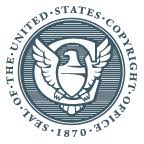
(Updated October 3) Progress is being made, to update a fundamental piece of US copyright law: the Digital Millennium Copyright Act of 1998 (DMCA).
Earlier in 2020, US Copyright Office completed the first public study to evaluate the impact and effectiveness of the safe harbor provisions contained in section 512 of title 17, United States Code – part of the DMCA. The Copyright Office also provides a useful summary page.
In May, the Copyright Office released a report that summarized its study and its recommendations toward updating the Notice and Takedown system used to take infringing distribution out of circulation. Clearly, there’s room for improvement.
Copyright Office holds September Webinars
In September, the Copyright Office held a series of three online sessions to promote ongoing engagement about standard technical measures (STMs) to improve the functioning of its Notice and Takedown system.
The first of the series, on September 22, focused on legal aspects of STMs. Because technologies evolve over time, the focus was about recognizing the difference between the declaration of a standard and the technologies used to implement them. Also, that a standard should specify minimum criteria for interoperability. Also, standardized technical measures should be available in a fair and non-discriminatory manner and not be overly burdensome to individual creators.
“What,” not “How”
Then, on September 23, the series continued with discussion of current technologies and their STM potential. True to the spirit of discussing what should be standardized, and not how, there was no discussion of forensic watermarking or credential abuse. Instead, the technical side of the discussion was more about normalizing the way that rights are expressed through standardized metadata and recorded in content registries. Extending on the theme that STMs be available to copyright holders of all sizes, panelists suggested that large players like YouTube, Facebook and Amazon have the resources to bear the cost.
There also was a lively discussion of how 90% of Fair Use claims by creators who are notified that their content is infringing are unaware of copyright law, the intent of fair use, or even that content must be licensed; and that education would go as far as technical measures in reducing infringement.
Looking forward
The series concluded on Tuesday September 29, with Standard Technical Measures – Looking Forward, which looked for agreement on the next steps in identifying and adopting standard technical measures.
The session panel noted that a useful first step would be to get broad agreement on use-cases (such as to increase the effectiveness of notice and takedown), identify the ways to mitigate them, and let the technology community determine how. The Copyright Office can take a role in moderating and problem resolution – working with technical standards organizations.
Many technical measures already exist; two which came up in the panel’s discussion were Automated Content Recognition and Content ID. Also, standardized ways exist to communicate rights – metadata – which differ with the types of content.
I have my own opinions. While panelists thought that agreement about use-cases would be useful, they dismissed a call for an ecosystem reference that would provide a referenceable framework.
Why it matters
Section 512 established a system for copyright owners and online entities to address online infringement, including limitations on liability for compliant service providers to help foster the growth of internet-based services.
Being more than 20 years old, the measures specified in the DMCA are severely out of date, due to the evolution of the Internet and the capabilities that the modern Internet enables (e-commerce, social media, etc). Current shortcomings include methods of reporting and stopping infringing distribution.
With the ever-expanding number of small creators and content providers, it will be increasingly important to call for detection, reporting and mitigation processes to be affordable to all; and that technology-based countermeasures not be priced out of reach for small providers.
Thanks to The Copyright Alliance for the heads-up!












